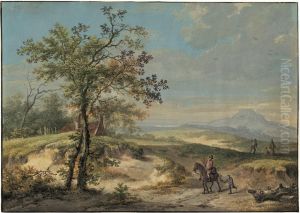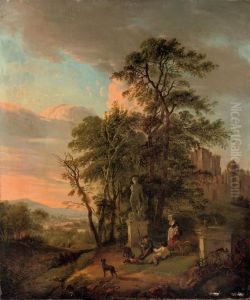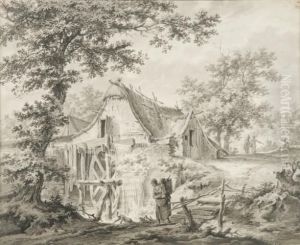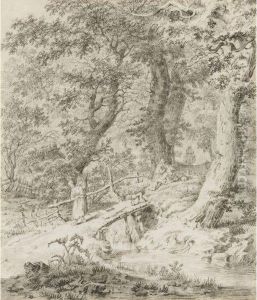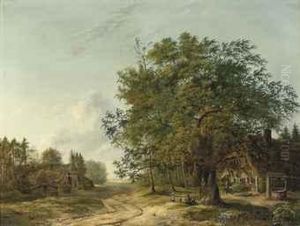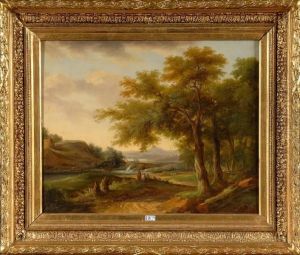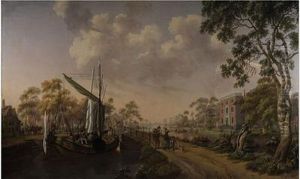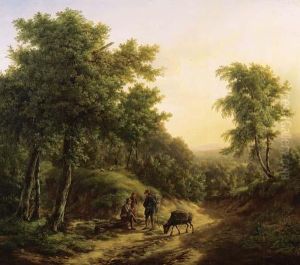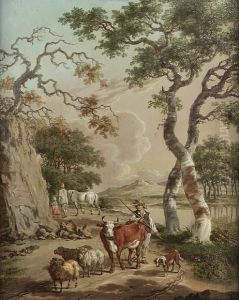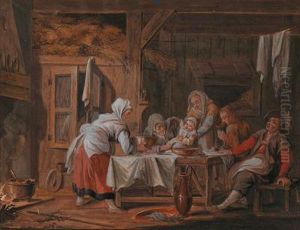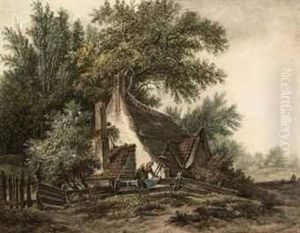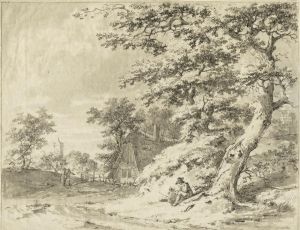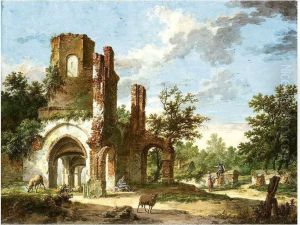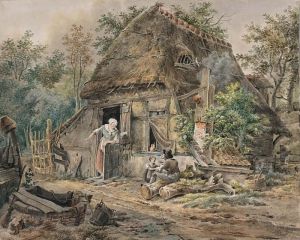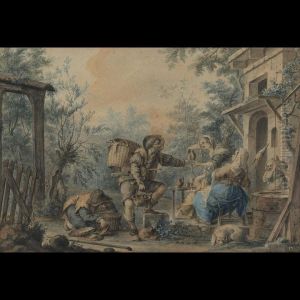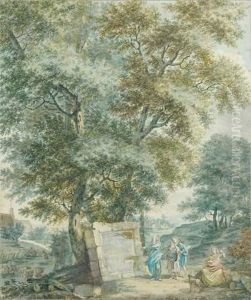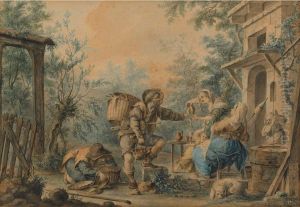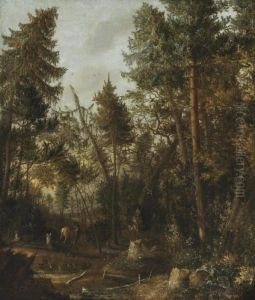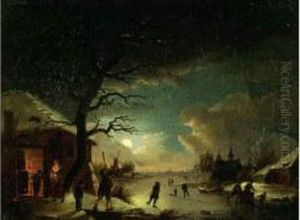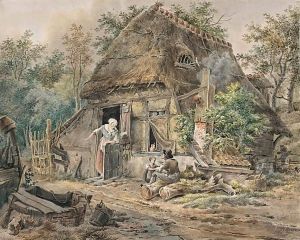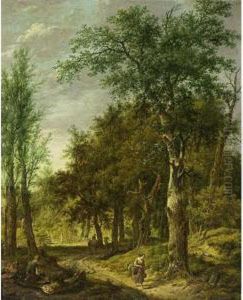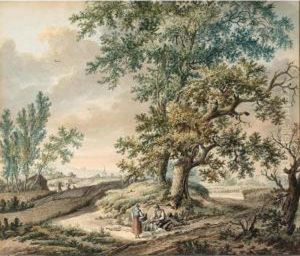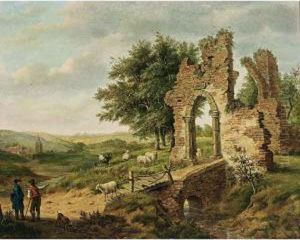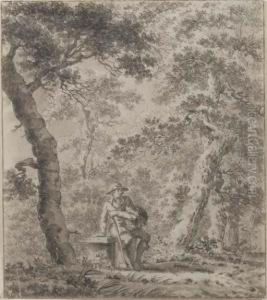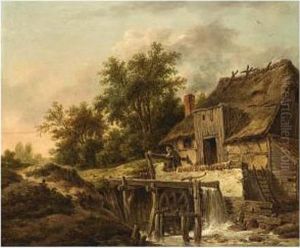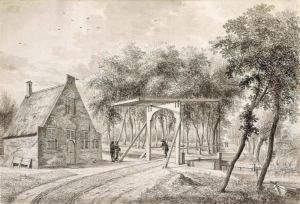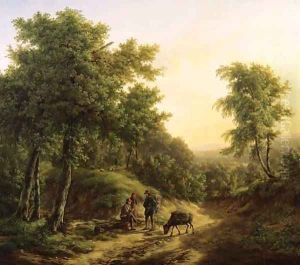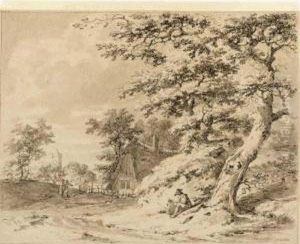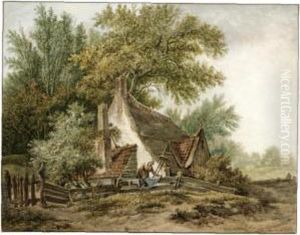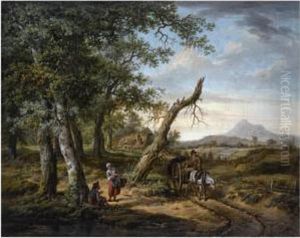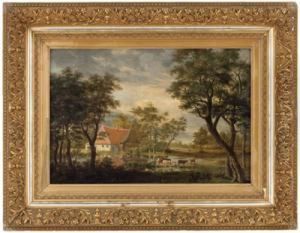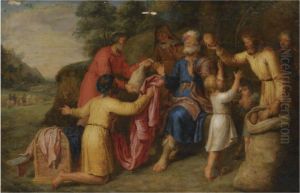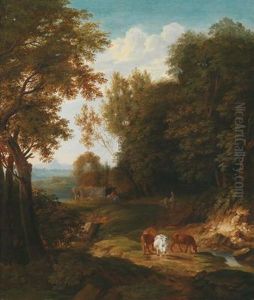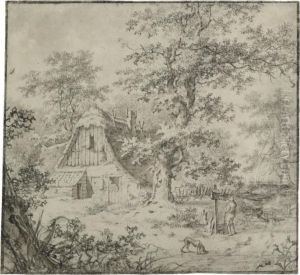Pieter Bartholomeusz. Barbiers IV Paintings
Pieter Bartholomeusz. Barbiers IV was a Dutch artist, born in 1749 in Amsterdam, Netherlands. He belonged to a family of artists that included his grandfather, Pieter Barbiers I, his father, Pieter Barbiers II, and his brother, Pieter Barbiers III. The Barbiers family were well known for their contributions to Dutch art, particularly during the 18th and early 19th centuries. Barbiers IV was primarily a painter and draughtsman, and his works included landscapes, cityscapes, and marine scenes.
Barbiers IV trained under his father and was influenced by his family's artistic tradition. He became known for his attention to detail and his ability to capture the essence of Dutch life and scenery. His work often portrayed the Dutch countryside, with an emphasis on the interaction between humans and their environment. Barbiers IV's paintings are characterized by their vibrant colors and the lively portrayal of figures within the landscape.
During his lifetime, Barbiers IV witnessed significant political and social changes, including the French occupation of the Netherlands. He continued to work and exhibit his art throughout these tumultuous times. His works were appreciated for their idyllic and often romanticized representation of the Dutch landscape, which provided a sense of continuity and national identity during periods of uncertainty.
Barbiers IV's contribution to Dutch art was significant, and his works are considered important in understanding the visual culture of the Netherlands in the late 18th and early 19th centuries. He passed away in 1842, leaving behind a legacy that was carried on by his descendants, as the Barbiers family continued to be active in the arts for several generations. Today, his works can be found in various art collections and museums, and they continue to be studied for their artistic and historical value.
